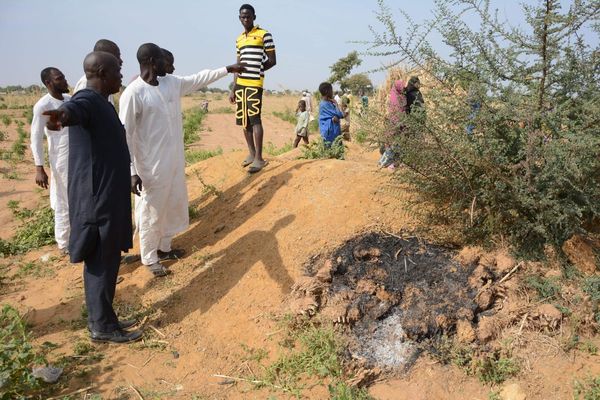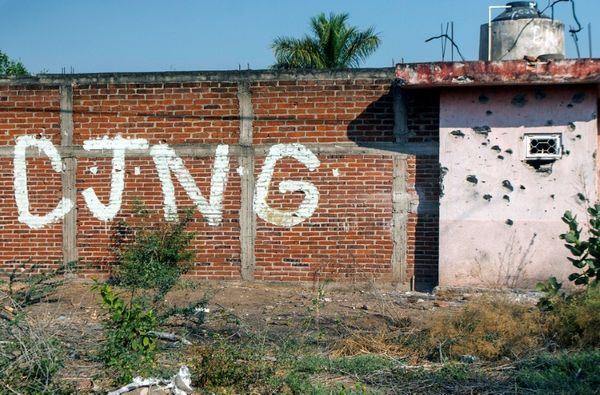When food stamp benefits faced a cutoff, nonprofit groups and local governments filed lawsuits, winning court orders requiring the resumption of payments.
And when military troops risked having to work without pay, the Trump administration diverted other Pentagon funds to cover the cost of those paychecks, in a legally untested move.
But no such quick fix is in store for Head Start, the early childhood education program that served nearly 716,000 children, mostly preschoolers, and pregnant women across the country in fiscal 2024, the most recent year with full data.
As a result, low-income families in states such as Georgia, Ohio and California began taking a hit this week, as early education advocates warn preschools are being forced to close their doors as a casualty of the partial government shutdown.
“Those programs are doing everything that they can to find other funds, other resources, to stay open,” said Tommy Sheridan, deputy director at the National Head Start Association. “They’re leveraging reserves, they’re leveraging philanthropic donations, they’re leveraging state funds or city funds.”
Some programs are closing indefinitely. Others are able to continue operating with support from school districts and local governments. But it’s clear, according to advocates, that this funding lapse won’t be sustainable for the long term.
Sheridan said there are about 1,600 grant recipients spread across the country that provide Head Start programming, including school districts, city or county governments, faith-based providers and other nonprofits. Together, they provide services across more than 17,000 centers.
But recipients have different start dates to their fiscal year spread across the 12 months, which means the longer the shutdown goes on, the more Head Start centers will be forced to shutter, absent further funds.
For instance, at the start of the shutdown, six Head Start recipients with Oct. 1 start dates went without further federal funding — but that figure jumped to 140 on Monday, according to the National Head Start Association.
One bill introduced by Rep. Maxine Waters, D-Calif., would require the federal government to reimburse states and local governments for operating costs during the shutdown. But the House has been out of session since mid-September, and other efforts to address Head Start funding are scant, though multiple lawmakers acknowledged the pain that comes with the funding lapse.
Senate Democrats also ran a “hotline” last week to gauge support for a package of funding bills that included the chamber’s fiscal 2026 Labor-HHS-Education appropriations measure, which covers dollars for Head Start. But that bill has yet to reach the Senate floor, much less a House-Senate conference committee to reconcile differences with the GOP-written House version that calls for much steeper cuts to funding compared to current levels.
“The best thing we could do would be to reopen government because every day there’s going to be another important program affected,” Senate Appropriations Chair Susan Collins, a Maine Republican, said when asked about potential efforts to allow Head Start grant funding to flow.
Feeling the crunch
In Georgia, Mindy Binderman, executive director of the Georgia Early Education Alliance for Ready Students, said the state has five grantees with Nov. 1 fiscal year start dates, making Georgia “one of the states that has the most children that will be impacted.”
“Our programs really don’t have reserves that they can use for this,” she said, adding that groups have been “leaving no stone unturned for the last two weeks” when it became clear the shutdown would drag on, potentially impacting 6,500 children throughout the state.
Binderman said programs in the metropolitan Atlanta area were able to secure a bridge loan that will keep doors open for 45 days, as well as a similar loan secured for other programs in Augusta, and some programs were also able to stay open through school funding.
However, she pointed to another program known as Action Pact, which she said serves more than 500 kids in southeast Georgia, that sent letters to families ahead of Monday that said services would be paused this week, absent funding.
“We’re deeply concerned right now about that program and then the sustainability of any of this,” she said, saying a “45-day reprieve is fantastic, and we’re lucky, but we’ve got to continue to advocate so that these kids are not without services.”
Karen Filipovich, executive director of the Montana Head Start Association, said the majority of her state’s programs aren’t yet feeling the crunch of the government shutdown, since they are on different timelines. But for rural states and programs, the stakes look different, she said.
At the state level, Montana doesn’t provide any line-item funding for Head Start programs. As a result, “nobody’s operating with a lot of reserves,” Filipovich said.
Just one of Montana’s 22 Head Start programs has been impacted by the government shutdown, Filipovich said, though she anticipates around one program a month will feel the impacts of the funding lapse if it continues.
That program, the Fort Belknap Head Start program, is being supported by Fort Belknap’s tribal government in the wake of Nov. 1. But it’s not clear how long that support could last — and rural Head Start programs play a pivotal role in the Montana communities they serve, Filipovich said.
“There’s places in our state where you have to drive more than 40 miles to get to a grocery store, you might drive 100 miles to see a pediatrician. And so while Head Start alone cannot cover all those needs, we really provide a lot of those core initial services and the connections and referrals to other services in the area,” she said.
“It’s not like you have this option to just go to another place if Head Start closes,” Filipovich added.
Julie Stone, executive director of the Ohio Head Start Association, said two programs in the state have leveraged resources to be able to keep their doors open for the next two weeks, while another program is receiving help from a private donor. Two other programs, she said, are set to close because of the lapse in funds.
Stone also said that about 40 percent of Head Start parents are in recovery for drug or substance abuse, “so the destabilizing impact of this is significant.”
Added pressure
Further complicating the matter is a lapse in the Supplemental Nutrition Assistance Program, also known as food stamps. On Nov. 1, the Agriculture Department stopped distributing those benefits, which many Head Start participants also typically receive.
The lapse came because the Trump administration has argued that the Agriculture Department’s SNAP contingency fund cannot be used when appropriations legislation hasn’t been signed into law.
SNAP enrollees got some respite Monday thanks to a court challenge aimed at forcing the administration to utilize those contingency funds, to the tune of $4.65 billion, to distribute SNAP benefits for November. But that funding will cover only about half of the benefits due this month.
The impact of both a lapse in SNAP benefits and potential Head Start closures could put an even tighter squeeze on some of America’s neediest families.
“The preschool education is critical. But for a lot of children, Head Start’s the only place that they get nutritious meals regularly provided,” Sheridan said. “And so, if they’re losing access to SNAP benefits and they’re losing access to Head Start, this is a very serious crisis that’s taking place there.”
The post No quick fix for Head Start funding as programs start to close appeared first on Roll Call.







